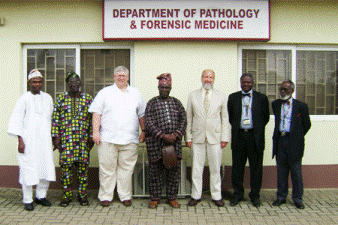Natural Resources, School of

Karl Reinhard Publications
Evidence for maize (Zea mays) in the Late Archaic (3000–1800 B.C.) in the Norte Chico region of Peru
Document Type
Article
Date of this Version
2013
Citation
www.pnas.org/cgi/doi/10.1073/pnas.1219425110 PNAS, March 26, 2013, vol. 110, no. 13 | 4945–4949.
Abstract
For more than 40 y, there has been an active discussion over the presence and economic importance of maize (Zea mays) during the Late Archaic period (3000–1800 B.C.) in ancient Peru. The evidence for Late Archaic maize has been limited, leading to the interpretation that it was present but used primarily for ceremonial purposes. Archaeological testing at a number of sites in the Norte Chico region of the north central coast provides a broad range of empirical data on the production, processing, and consumption of maize. New data drawn from coprolites, pollen records, and stone tool residues, combined with 126 radiocarbon dates, demonstrate that maize was widely grown, intensively processed, and constituted a primary component of the diet throughout the period from 3000 to 1800 B.C.


Comments
Copyright 2013. Used by permisison.